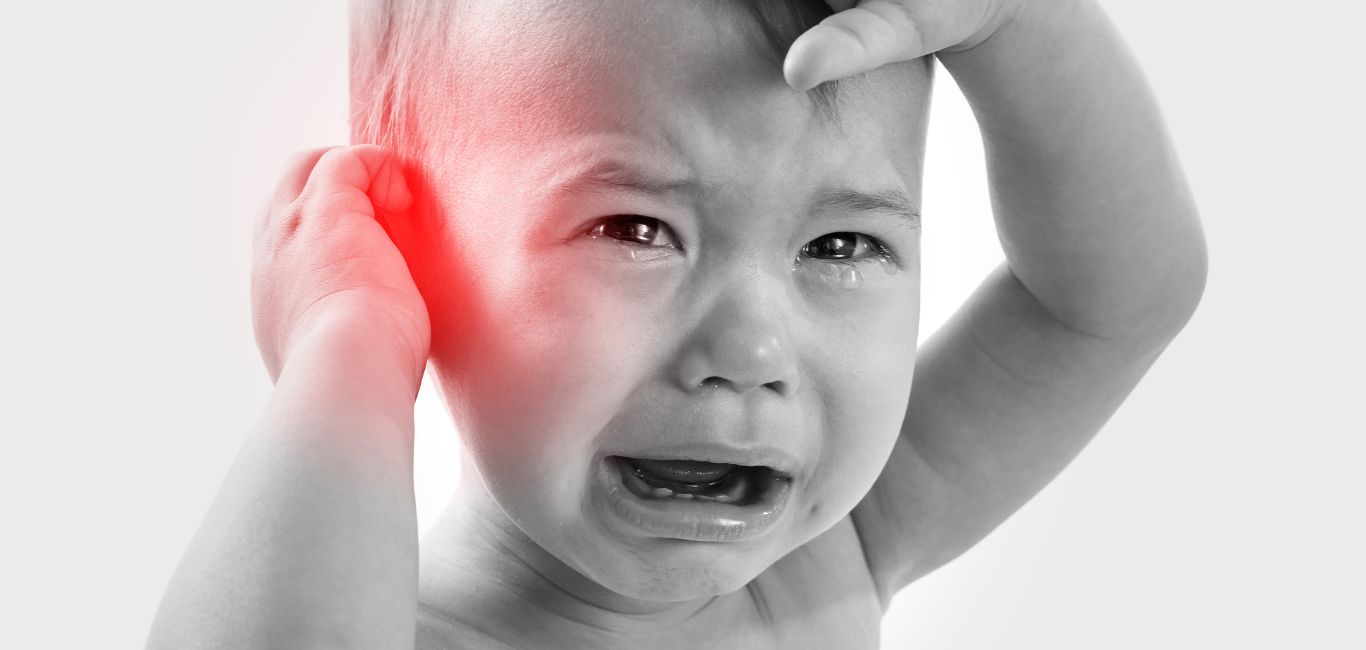
Ear infections are the second most prevalent childhood ailment. In fact, the Indian Academy of Paediatrics (IAP) reports that over 80 per cent of children encounter at least one episode of acute otitis media (AOM) by the time they reach the age of three.
Causes of ear infection in babies
Dr Preeth Shetty, a consultant paediatrician at Fortis Hospital in Bengaluru, explains that ear infections in babies can be triggered by various causes, including viruses, bacteria, and, on rare occasions, fungi. The most common cause in infants is injuries, such as nail pricks or contact with objects like pens and keys. “Additionally, a damp environment and dry skin can worsen itching, contributing to otitis externa,” he says.
Middle ear infections, Dr Shetty says, often result from infections spreading from the nasal passages. Bottle-fed infants more frequently experience viral infections and secondary bacterial infections in the nasal region.
Dr Shantanu Tandon, a senior ENT surgeon at Sakra World Hospital in Bengaluru, points out that the most common causes of ear infections in infants are middle ear infections (AOM), which typically follow upper respiratory infections and may be linked to adenoid hypertrophy.
Signs and symptoms
Dr Shetty points out that babies with ear infections experience intense pain, leading to incessant crying with or without fever. In cases of middle ear infection, nasal congestion and discharge are nearly always present. Dr Tandon adds that typical symptoms of ear infections in babies include frequent ear-pulling, difficulty with breast-feeding, and occasionally, swelling behind the ear. However, babies find relief when held upright.
Preventive measure
To prevent otitis externa, Dr Shetty recommends keeping the ear dry and using a cotton wick soaked in moisturiser or oil to avoid dampness in the external ear canal. “To keep middle ear infections at bay, be careful with colds and coughs, and make sure not to feed babies while they are lying down or use bottles and sippy cups,” says Dr Shetty. He adds that vaccinations against H influenza B, pneumococcus, and influenza play a significant role in preventing middle ear infections.
Dr Tandon also suggests the following preventive measures:
- Breastfeeding: Ensure proper positioning during breastfeeding
- Burping: After feeds, burping is essential
- Avoiding sick siblings: Minimise exposure to siblings with upper respiratory infections
- Pneumococcal vaccination: This vaccine can offer protection against specific infections linked to ear problems
Treatment of ear infection
Dr Shetty suggests that the treatment approach for otitis externa depends on its cause, typically involving pain relief, topical antibiotics, and ear drops with anaesthetic agents. Middle ear infections require pain relievers, nasal decongestants, and ear drops with anaesthetic agents. Severe infections with pus-like discharge in both ears may necessitate oral antibiotics for ten days. Younger babies with middle ear infections require extra care, as the infection can potentially lead to meningitis.
Comfort and hygiene
Dr Tandon stresses the importance of maintaining proper hygiene to avoid complications and discomfort. Preventing water from entering the ears during baths is essential. Dr Shetty adds that the drop in temperature in the evening can exacerbate nasal and ear congestion, leading to increased pain and fever. This is influenced by the body’s circadian rhythm and a decrease in steroid levels in the evening.
Dr Tandon strongly advises seeking medical help for infants, as they might not be able to effectively communicate their symptoms. If left untreated, it can lead to complications like mastoiditis or abscess. In the long term, they can result in otitis media with effusion, poor speech development, and perforation of the eardrum.

















